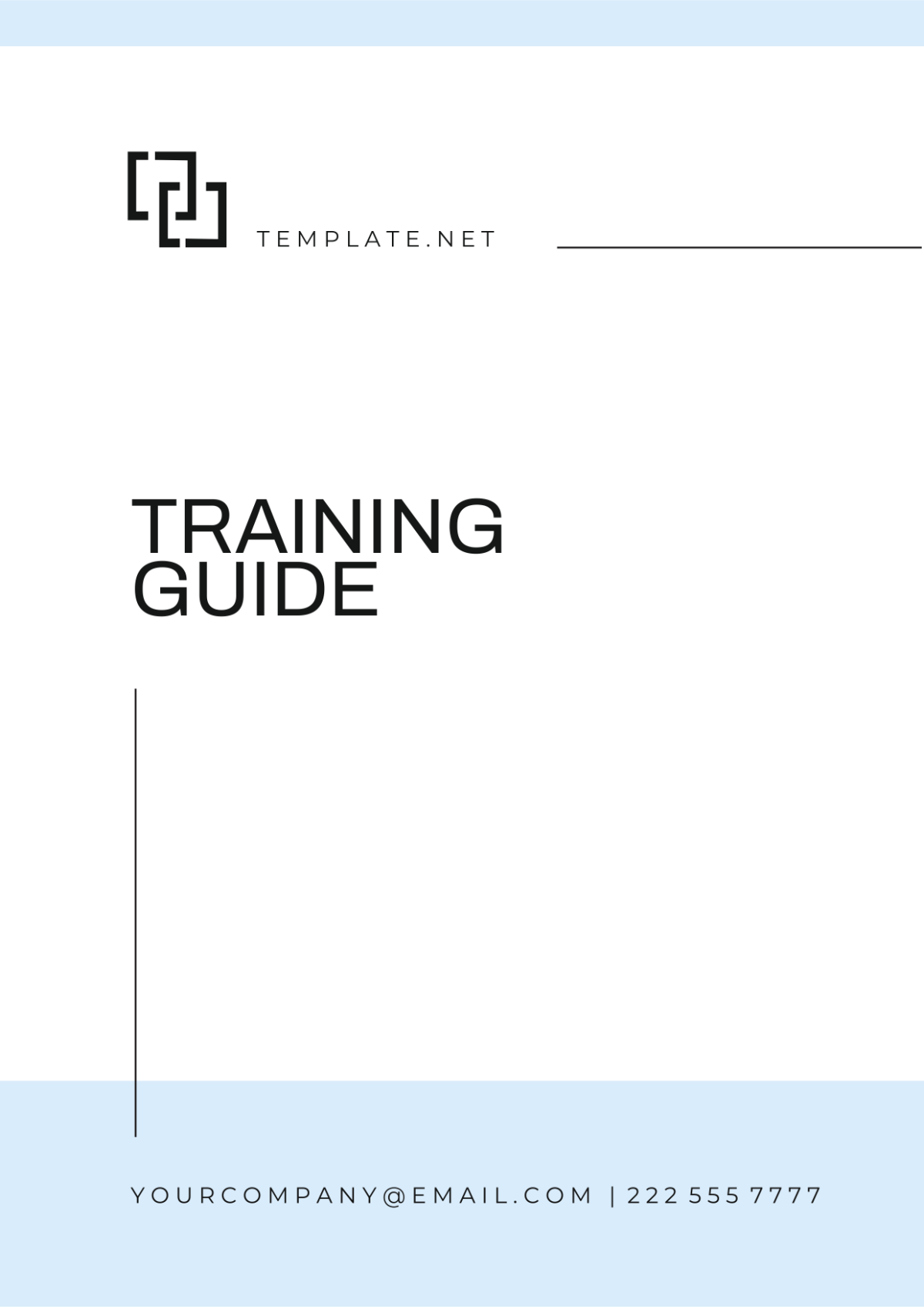Hazard Prevention Guide
Introduction
Occupational hazards are potential sources of harm or adverse health effects on a person or persons working in various job environments. These hazards can stem from a variety of sources, including physical, chemical, biological, ergonomic, and psychosocial factors. This Hazard Prevention Guide is designed to provide strategies and practices to mitigate various workplace hazards. It is structured to be applicable across various industries, with a focus on maintaining safety standards and best practices.
Importance of Hazard Identification and Risk Assessment:
Effective hazard identification and risk assessment are foundational to a robust workplace safety program. They enable the early recognition of potential dangers, allowing for timely intervention through appropriate control measures. Regular risk assessments not only help in preventing accidents and health issues but also contribute to increased awareness and understanding of the risks associated with specific job functions and workplaces.
Legal and Regulatory Framework
Several laws and regulations mandate the implementation of safety measures and protocols. Key legislation includes the Occupational Safety and Health Act (OSHA), which sets forth employer responsibilities to provide a safe working environment. Additionally, the Hazard Communication Standard (HCS) mandates that information about the identities and hazards of chemicals must be available and understandable to workers.
Employer and Employee Responsibilities:
Employers are required to implement workplace safety protocols, conduct regular training sessions, and ensure the availability of safety equipment. They are also responsible for conducting regular risk assessments and maintaining records of incidents and preventive measures. A table summarizing key responsibilities is provided below:
Stakeholder | Responsibilities |
Employers | Implement safety protocols, conduct training, provide safety equipment, perform risk assessments, maintain records. |
Employees | Follow safety procedures, participate in training, report hazards/incidents. |
Identifying Occupational Hazards
A. Types of Hazards:
Physical Hazards: These include excessive levels of noise, vibration, illumination, and temperature extremes. For instance, machinery noise in manufacturing plants can lead to hearing loss if not properly managed.
Chemical Hazards: These involve exposure to harmful chemicals. Examples include exposure to solvents in cleaning products and toxic fumes from welding processes.
Biological Hazards: These relate to exposure to harmful biological agents. For example, healthcare workers may be exposed to infectious diseases.
Ergonomic Hazards: These are related to physical factors that can cause musculoskeletal disorders, such as repetitive strain from prolonged computer use.
Psychosocial Hazards: These include factors like work-related stress, harassment, or long working hours impacting mental health.
B. Methods for Hazard Identification:
Inspections: Regular workplace inspections to identify potential hazards, such as faulty equipment or unsafe practices.
Employee Feedback: Encouraging employees to report any concerns or hazards they observe.
Incident Reports: Analyzing past incidents to identify recurring patterns or areas of concern.
Risk Assessment Procedures
A. Steps in Conducting Risk Assessments:
Identify Hazards: Using the methods mentioned above.
Determine Who Might Be Harmed and How: Assessing which employees are at risk and the nature of the potential harm.
Evaluate Risks: Determining the likelihood and severity of harm from identified hazards.
Record Findings: Keeping detailed records of hazards, their assessed risks, and preventive measures.
Review and Update: Regularly revisiting risk assessments to account for new hazards or changes in the workplace.
B. Risk Matrix:
This table illustrates the classification of risk levels based on the likelihood of occurrence and the severity of the impact.
Likelihood | Minor Injury | Serious Injury | Fatal Injury |
Unlikely | Low Risk | Moderate Risk | High Risk |
Possible | Moderate Risk | High Risk | Very High Risk |
Likely | High Risk | Very High Risk | Extreme Risk |
Control Measures for Hazard Reduction
A. Hierarchy of Control Measures:
Elimination: Removing the hazard altogether, such as replacing a toxic chemical with a non-toxic one.
Substitution: Replacing a hazard with a less hazardous option, like using low-noise machines.
Engineering Controls: Isolating people from the hazard, such as installing ventilation systems for airborne contaminants.
Administrative Controls: Changing the way people work, like implementing job rotation to reduce repetitive strain.
Personal Protective Equipment (PPE): Using equipment to protect individuals, such as safety goggles or earplugs.
B. Examples of Control Measures:
The following table provides examples of control measures for common workplace hazards.
Hazard Type | Control Measure Example |
Physical | Installing sound-dampening materials around noisy machinery. |
Chemical | Using closed systems for handling hazardous chemicals. |
Biological | Providing vaccinations for employees in healthcare settings. |
Ergonomic | Adjusting workstation layout to promote good posture. |
Psychosocial | Implementing policies to manage workplace stress and bullying. |
Training and Awareness Programs
A. Importance of Training in Hazard Prevention:
Effective training programs are vital for equipping employees with the knowledge and skills to recognize and safely manage workplace hazards. Regular training ensures that all personnel are aware of potential risks and understand the procedures for reporting and mitigating them.
B. Components of Effective Training Programs:
The table below outlines key components of a comprehensive training program, detailing topics, descriptions, and target employees.
Training Topic | Description | Target Employees |
Hazard Identification | Techniques to identify potential workplace hazards. | All employees |
Safe Work Practices | Procedures to perform tasks safely. | Employees in high-risk areas |
Emergency Procedures | Actions to take in case of an emergency. | All employees |
Use of PPE | Proper usage and maintenance of personal protective equipment. | Employees handling hazardous materials |
Stress Management | Techniques to manage work-related stress. | All employees |
Monitoring and Review
A. Continuous Monitoring Practices:
Regular monitoring of the workplace is essential to ensure the ongoing effectiveness of hazard control measures. This involves routine safety audits, workplace inspections, and reviewing employee feedback. For example, safety officers might conduct monthly inspections to check the condition of machinery and the proper use of personal protective equipment.
B. Periodic Review and Update of Hazard Prevention Strategies:
Hazard prevention strategies should be reviewed at least annually or following significant changes in the workplace, such as the introduction of new equipment or processes. This review process should assess the current risk assessment's relevance, the effectiveness of control measures, and the need for updates based on new information or emerging risks.
Emergency Response Planning
A. Emergency Situations Identification:
Planning for emergencies is a critical aspect of hazard prevention. This includes identifying potential emergency scenarios and their corresponding response actions. The table below lists common emergency situations and recommended actions.
Type of Emergency | Response Actions |
Fire | Activate the fire alarm, evacuate, use fire extinguishers if safe. |
Chemical Spill | Secure the area, use spill kits, and notify the emergency response team. |
Medical Emergency | Call emergency services, provide first aid, and secure the area. |
Natural Disaster | Follow evacuation or shelter-in-place procedures as appropriate. |
B. Role of Employees in Emergency Situations:
All employees should be trained on emergency response procedures relevant to their work area. This includes knowing evacuation routes, the location of emergency equipment, and the procedure for reporting emergencies. Regular drills should be conducted to ensure employees are prepared to respond effectively in a real emergency.
Reporting and Documentation
A. Importance of Accurate Reporting:
Accurate and timely reporting of hazards, incidents, and near-misses is crucial in maintaining a safe work environment. It helps identify patterns that might indicate underlying safety issues and ensures that appropriate measures are taken to prevent future occurrences.
B. Documentation Requirements and Procedures:
All safety-related incidents and the measures taken in response should be thoroughly documented. This documentation should include details of the incident, the investigation findings, actions taken, and follow-up measures. Regular reporting to management and relevant regulatory bodies is also necessary to comply with legal requirements and to facilitate continuous improvement in safety practices. A sample incident report format might include the following fields:
Field | Description |
Date and Time of Incident | When the incident occurred. |
Description of Incident | Detailed account of what happened. |
Immediate Actions Taken | First response actions to the incident. |
Investigation Findings | Results of the investigation into the incident. |
Corrective Actions | Steps taken to prevent recurrence. |
Follow-Up Required | Any additional actions or monitoring needed. |
Conclusion
This guide has outlined the essential elements of occupational hazard prevention, including hazard identification, risk assessment, control measures, training and awareness, monitoring, emergency response, and reporting. Each element plays a crucial role in creating and maintaining a safe workplace.
Reinforcement of Ongoing Commitment to Workplace Safety:
The commitment to workplace safety is an ongoing process that requires the active participation of both employers and employees. It is essential to stay vigilant, continuously improve safety protocols, and foster a culture of safety where every individual feels responsible and empowered to contribute to a hazard-free environment.

















































